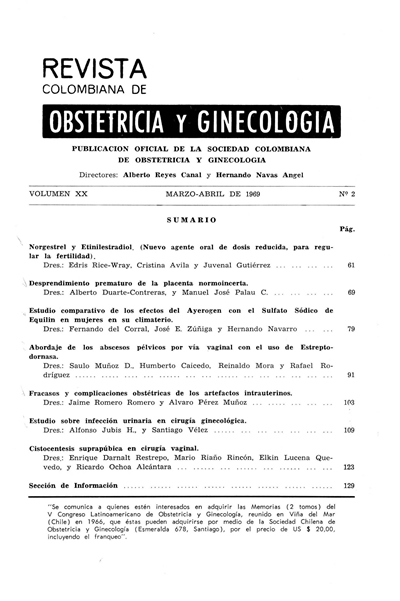Estudio sobre infección urinaria en cirugía ginecológica
DOI:
https://doi.org/10.18597/rcog.2346Resumen
Desde hace mucho tiempo se conoce que la sonda vesical a permanencia produce una serie de problemas que día a día preocupa a muchos investigadores.
Biografía del autor/a
Alfonso Jubis H., Universidad de Antioquia
Instructor de Tiempo Completo. Departamento Obstetricia y Ginecología. Universidad de Antioquia.
Santiago Vélez, Universitario San Vicente de Paúl
Jefe del Laboratorio Clínico. Hospital Universitario San Vicente de Paúl.
Referencias bibliográficas
GILLESPIE W. A., LENNON G. G. y col. Prevention of catheter infection of urine in famele patients. Brit. Med. J. 11 13, 1962.
HIRSCH, H. A. Postoperative infection of urinary tract with special consideration of diagnosis. Gyneaecologia 161 : 327, 1966.
KUNIN, C. and McCORMACK, C. Preventioñ of catheter induced urinary tract infections by steril closed drainage. The New England Journal of Med. 274 (21): 1155-1161, 1966.
THORNTON, G. T., LYTTON, B. and AN_- DRIOLE, V. Bacteriuria during indewelling catheter drainage. Effect of constant bladder rinse. J.A.M.A. 195 ( 3) : 179-183, 1966.
BAILE and SCOLT, Diagnostic Microbiology. Saint Louis. The C. V. Mosby Company 1962. p. 88-90.
GUTIERREZ, R. A. Algunas consideraciones sobre bacteriología clínica . Boletín de Laboratorio NC? 2 p. 4-11 .
LOUDON, 1. S. L. and GREENHALGH, G. P.: Urinary tract infections in general practice. Lancet, 2: 1246, 1962.
GROSSBERG, S. E., PETERSDORF, R. G. AIRTIN, J. A. and BENNETT, I. L. Jr. Factors influencing the species and antimicrobial resistence of urinary pathogens. Am. J. Med. 32: 44, 1952.
Cómo citar
Descargas
Descargas
Publicado
Número
Sección
| Estadísticas de artículo | |
|---|---|
| Vistas de resúmenes | |
| Vistas de PDF | |
| Descargas de PDF | |
| Vistas de HTML | |
| Otras vistas | |
















